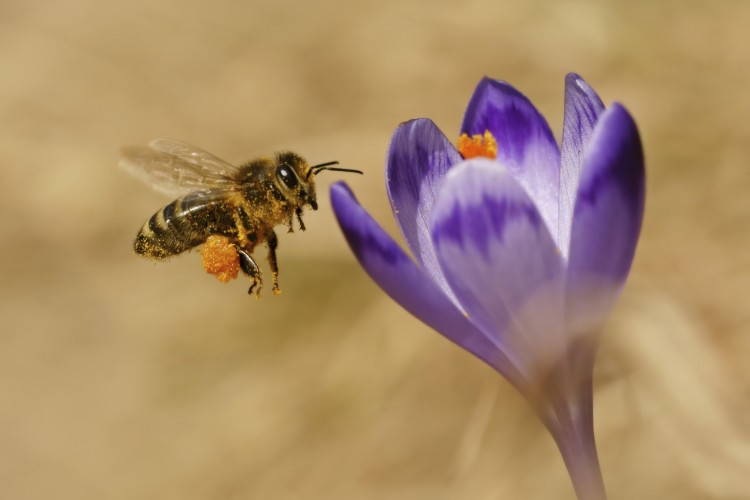How queen honey bees choose their mates may affect worker bees’ gut flora and consequently overall colony health, according to new research published in PLoS ONE on March 12.
Genetically diverse colonies arise when a queen has multiple mates, and these hives are known to be healthier and more productive, for example, the workers forage at higher rates and communicate more frequently using methods like waggle dancing to locate food.
However, commercial beekeeping has produced less diverse colonies through breeding for desirable traits. Honey bees pollinate more than 400 crops globally and have recently been dying out on a large scale due to Colony Collapse Disorder (CCD), the causes of which are unknown, but poor nutrition is thought to contribute.
A team of U.S. researchers used a technique called 16S rRNA pyrosequencing to study the bacteria in the food, on the bodies, and in the guts of honey bees. Symbiotic bacteria help workers turn pollen into nutritious “bee bread,” which contains most of the essential nutrients needed by bees and can be stored in the hive for a long time.
The scientists compared the bacterial communities inside two sets of hives–genetically diverse populations from queens that had mated with 15 males versus genetically uniform ones from queens that had only mated with one drone.
They found that workers in the more genetically diverse hives had 1,105 species of bacteria and 40 percent more potentially beneficial bacteria, whereas the uniform ones had only 781 species but 127 percent more potential pathogens.
In particular, four types of bacteria that ferment food in other organisms were present in large numbers, such as Succinivibrionaceae, which occur in animals like cows, and Bifidobacterium, which is found in yogurt.
“We’ve never known how healthier bees are generated by genetic diversity, but this study provides strong clues,” said research leader Heather Mattila at Wellesley College in a press release.
“Our findings suggest that genetically diverse honey bees have the advantage of broader microbial communities, which may be key to improving colony health and nutrition—and to understanding factors that can mitigate honey bee decline.”
The queen’s behavior is unusual for social insects in that she mates with many males.
“Most bees, ants, and wasp queens mate singly and produce colonies of closely related, single family workers,” she added. “Honey bee queens are different in this regard, and this behavior has resulted in extremely productive colonies that dominate their landscape.”
Mattila said that people can help out ailing bee populations by including plants in their gardens that encourage pollinators, and by buying honey directly from local beekeepers to increase their profits and make bee-friendly techniques more affordable.
“There is a large community of bee researchers in the United States and around the world, and we are doing everything we can to maximize the health of our most important pollinator,” she concluded.
Read the research paper here
The Epoch Times publishes in 35 countries and in 19 languages. Subscribe to our e-newsletter.
.






